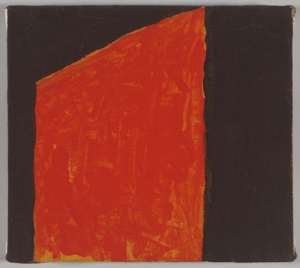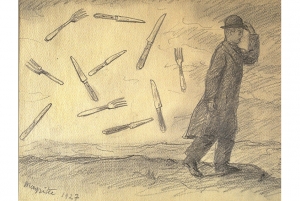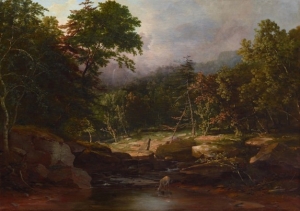|
Displaying items by tag: movement

On July 27, 2013, the exhibition The Dorothy and Herbert Vogel Collection: Fifty Works for Fifty States will open at the Virginia Museum of Fine Arts. The show will present a portion of the couples incendiary collection, which they gifted to the museum in 2008. The works include examples of Minimal and Conceptual art as well as figurative and neo-expressionist pieces.
The late Herb Vogel, a postal clerk, and his librarian wife Dorothy, began collecting art in New York in 1962, the height of the minimal, conceptual and post-minimal movements. They eventually amassed over 4,000 works, primarily drawings, in a tiny Manhattan apartment on a shoestring budget. Five years ago, the Vogels partnered with the National Gallery of Art in Washington, D.C. and began a unique donation strategy. With the museum’s support, the couple distributed 2,500 works from their collection between every state in the country, with 50 works going to each one.
The Dorothy and Herbert Vogel Collection: Fifty Works for Fifty States will be on view at the Virginia Museum of Fine Arts through October 20, 2013.

The Fenimore Museum of Art in Cooperstown, NY is currently hosting the exhibition Hudson River School: Nature and the American Vision. The show presents a number of important works by key figures in the movement including Albert Bierstadt (1830-1902), Thomas Cole (1801-1848), Frederic Edwin Church (1826-1900), Jasper F. Cropsey (1823-1900) and Asher Durand (1796-1886). Nature and the American Vision was organized by the New-York Historical Society and made possible by the New York State Council on the Arts.
The exhibition aims to communicate the Hudson River School artists’ fascination with the American landscape. The mid-19th century movement was influenced by romanticism and is defined by its paintings that celebrate nature’s sublimity and exude an almost ethereal quality. Many Hudson River School painters regarded nature as an indefinable manifestation of God, which strongly influenced the movement’s aesthetic qualities.
Hudson River School: Nature and the American Vision will be on view at the Fenimore Museum of Art through September 29, 2013. The Fenimore, which is operated by the New York State Historical Association, specializes in American Folk Art, Indian art and artifacts, 19th century genre painting and American photography.

The Hudson River School Art Trail will open for the season on June 22, 2013.The trail boasts guided hikes, which are organized by the Thomas Cole National Historic Site in Catskill, New York and take visitors on a tour of the vistas, mountains and valleys that influenced the Hudson River School painters including Thomas Cole (1801-1848), Frederic Edwin Church (1826-1900), Asher B. Durand (1796-1886), Jasper Francis Cropsey (1823-1900), and Sanford Gifford (1823-1880).
The Hudson River School Art Trail is divided into a number of large geographic areas and allows visitors to walk in the footsteps of some of the most significant artists of the 19th century. The Hudson River School was the first major art movement to sweep America and it dominated the visual arts for over 50 years. The trail includes the home of Thomas Cole who is credited with founding the Hudson River School; Olana, the home of Frederic Edwin Church, an important figure in the movement; and views of the landscapes that are featured in the artists’ paintings.
The Hudson River School Art Trail was expanded last year, more than doubling its size from its original 8 sites in New York to 20 sites in New York, New Hampshire and Massachusetts.

The Art Institute of Chicago announced that they have acquired Thomas Hart Benton’s (1889-1975) Cotton Pickers (1945), a critical example of American Regionalism, a realist modern art movement that gained popularity during the 1930s. Regionalist artists forsook urban life in favor of creating scenes of everyday rural life in America. Benton was a pioneer of the movement and is considered a pivotal figure in American art.
Cotton Pickers is a rare example of Benton’s large-scale paintings and it is the first oil painting by the artist to enter the museum’s collection. It will bolster the Art Institute’s world-renowned collection of paintings from the period, which includes Grant Wood’s (1891-1942) iconic painting American Gothic (1930) and John Steuart Curry’s (1897-1946) Hogs and Rattlesnakes (1930). The addition of Cotton Pickers helps the Art Institute tell the story of Regionalism more fully. Judith Barter, the Field-McCormick Chair and Curator in the American Art Department, considers the painting one of the museum’s most important acquisitions in the last several decades.
Cotton Pickers will be exhibited alongside American Gothic and Hogs and Rattlesnakes.

Now on view at the National Gallery of Art in Washington, D.C. is Pre-Raphaelites: Victorian Art and Design, 1848-1900, the first major survey of Pre-Raphaelite art to take place in the United States.
The Pre-Raphaelite Brotherhood, which formed in 1848, was a group of English painters, poets, and critics who rejected the traditional approaches to art and painting established by the Mannerist artists who succeeded Raphael (1483-1520) and Michelangelo (1473-1564). Instead, the Pre-Raphaelites turned to medieval and early Renaissance art for inspiration often painting subjects from Shakespeare and the Bible. Pre-Raphaelitism, which rattled Britain from 1848 to 1900, was considered the country’s first avant-garde movement.
The exhibition at the National Gallery features approximately 130 paintings, sculptures, works on paper, and decorative objects by the movement’s leading members including John Everett Millais (1829-1896), Dante Gabriel Rossetti (1828-1882), and William Holman Hunt (1827-1910). Organized by Tate Britain in collaboration with the National Gallery, Pre-Raphaelites: Victorian Art and Design will be on view through May 19, 2013.

Genre-defying painter, sculptor, and illustrator, Richard Artschwager (1923-2013), died February 9, 2013 in Albany, NY. He was 89.
Artschwager, who was often linked to the Pop Art movement, Conceptual Art, and Minimalism, resisted classification through his clever genre mixing. His most well known sculpture, Table with Pink Tablecloth (1964) is an amalgamation of Pop Art and Minimalism and consists of a box finished in colored Formica, creating the illusion of a wooden table draped in a pink tablecloth. Artschwager often used household forms in his work including chairs, tables, and doors. In his paintings, Artschwager often painted black and white copies of found photographs and then outfitted them with outlandish frames made of painted wood, Formica or polished metal.
Artschwager was born in 1926 in Washington, D.C. and went on to study at Cornell University. In 1944, before he could finish his degree, he was drafted into the Army and sent to Europe. Upon returning to the United States after World War II, Artschwager completed his degree and decided to pursue a career in art. He moved to New York City and began taking classes at the Studio School of the painter Amédée Ozenfant, one of the founders of Purism. With a growing family and bills to pay, Artschwager took a break from making art to start a furniture-making business. After a fire destroyed his workshop, Artschwager returned to making art, developed his defining style, and was taken on by the Leo Castelli Gallery, which represented him for 30 years.
A few days prior to Artschwager’s death, the Whitney Museum of American Art in Manhattan closed a major career retrospective of his work. It was the second of its kind to be organized by the museum.

Surrealism, a cultural movement that includes visual arts, literature, film, and music, began in the 1920s with the musings of the French writer and poet, André Breton (1896-1966). Now celebrated and studied for its innovative and daring nature, surrealism pushed the boundaries in regard to established aesthetics and artistic techniques. While experimenting with modern conventions, surrealist masters such as Salvador Dalí (1904-1989), Max Ernst (1891-1976), René Magritte (1898-1967), and Joan Miró (1893-1983) went on to create some of the most revered artworks of the 20th century.
Drawing Surrealism, an exhibition at The Morgan Library & Museum in New York, explores the surrealists’ relationship with drawing. While most exhibitions and scholars tend to focus on the surrealists’ paintings and sculptures, drawing played a pivotal part in the movement. The medium, which is highly connected to the brain and offers a sense of immediacy and spontaneity, was the perfect vehicle for the surrealists who valued the subconscious mind, dream imagery, language, and happenstance. The Surrealists used techniques such as automatic drawing and frottage, which requires rubbing graphite or another drawings material on a sheet of paper that is place over a textured surface, to bypass the conscious mind, creating instinctive and inimitable works.
Drawing Surrealism, which is co-organized with the Los Angeles County Museum of Art (LACMA), presents over 165 works on paper and occupies two of the Morgan’s galleries. The exhibition is organized chronologically, illustrating how surrealist drawing techniques evolved and spread throughout the world over time. The Morgan, LACMA, Tate Modern (London), the Pompidou Center (Paris), the Museum of Modern Art (New York), and the Menil Collection (Houston) all contributed works for the exhibition.
Drawing Surrealism will be on view at the Morgan Library & Museum through April 21, 2013.

A curator at the Dallas Museum of Art discovered an unsigned painting likely created by the American landscape painter, George Inness. The work has been in the museum’s collection for more than 80 years but had been attributed to Asher B. Durand, one of the leading figures of the Hudson River School painters. The mid-19th century art movement had a profound influence on Inness’ work.
After experts at the museum questioned In the Woods’ attribution, American art curator Sue Canterbury decided to do some research on the oil on canvas. Canterbury explored other artists whose work fit with In the Woods’ aesthetic and stumbled upon Michael Quick’s George Inness: A Catalogue Raisonne. Within the raisonne Canterbury found a pen and ink drawing that bore a striking resemblance to In the Woods. It was then that the museum decided to reattribute the painting to Inness.
The bucolic forest scene has been renamed Stream in the Mountains by curators and will be display at the museum. It is a significant work because it is from Inness’ early years and not many of his works from this era have survived.
|
|
|
|
|